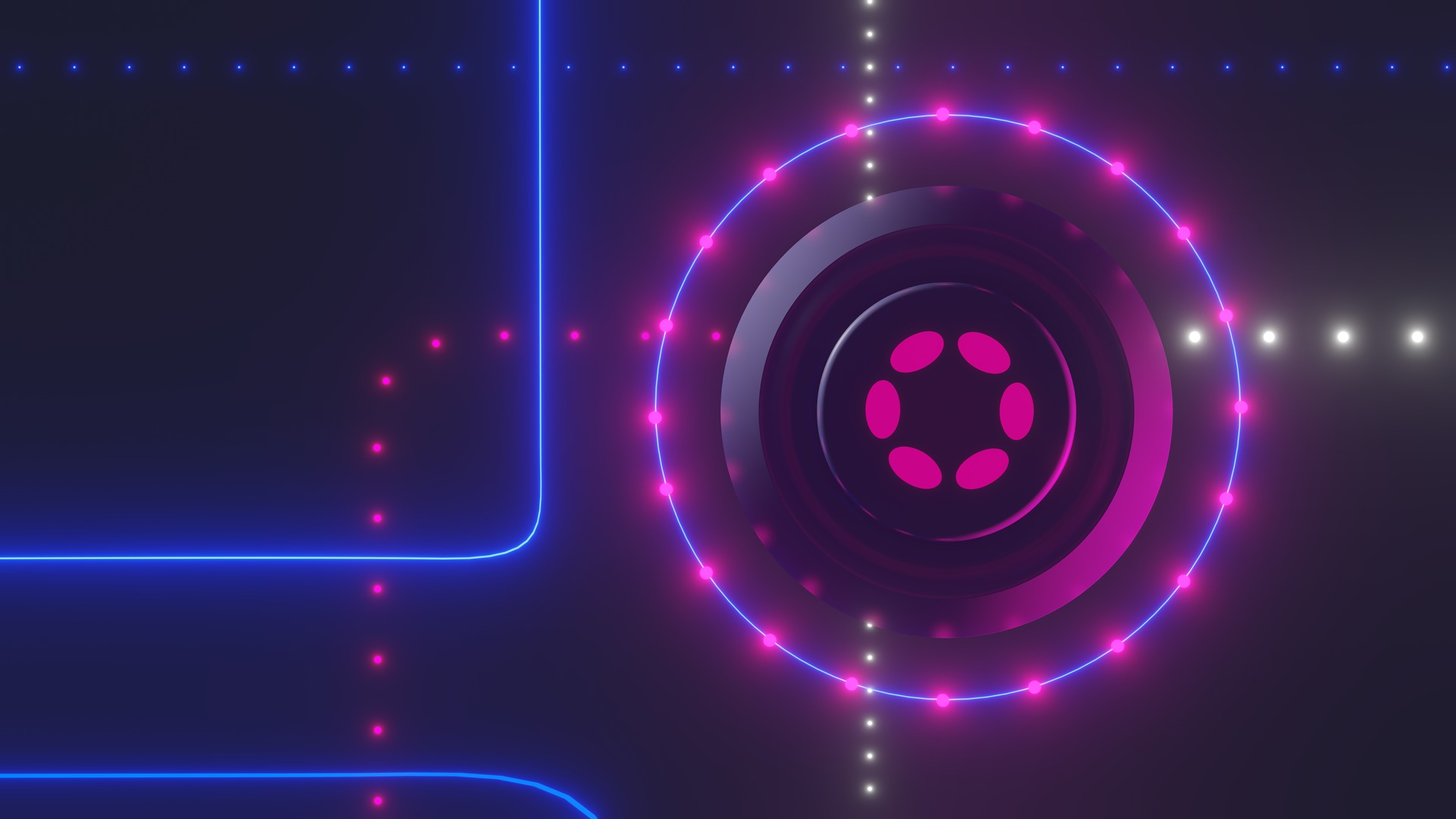Polkadot Roadmap Roundup
A proposed roadmap for upcoming developments on Polkadot. Get the latest status on asynchronous backing, parathreads, XCMv3, governance, common-good parachains and more.
 By Polkadot•September 26, 2022
By Polkadot•September 26, 2022
By Rob Habermeier, Polkadot founder
As the Polkadot Community comes into the last quarter of 2022, we at Parity Technologies would like to update the community on a number of important development topics we’ve been working on. These bridge a number of categories: parachain scalability, parachain development, relay-chain governance, cross-chain communication, system parachains, bridging to other ecosystems, and staking. We’ve been hard at work on delivering the code for these features and upgrades and look forward to having them accepted by the Polkadot community.
Asynchronous Backing
Asynchronous Backing is the first set of major optimizations to Polkadot’s parachain consensus protocol since its launch on Polkadot in December 2021. Scalability is a huge topic in the blockchain ecosystem, and the goal of Parity and the Web3 Foundation as protocol designers is to meet the demand of parachains by providing each parachain with a large increase in block capacity. If Asynchronous Backing is enabled by the network, the block time of 12 seconds for parachains will be shortened to 6 seconds, which will mean lower latency and faster finality for transactions executed on parachains. Furthermore, the parachain blocks themselves will be allocated more time for execution, meaning that they get even more throughput.
Asynchronous Backing is a large upgrade spanning the runtime, the networking protocol, and the logic of collators which is designed to do 3 things: decrease the parachain block time to 6 seconds, increase the amount of block space available to each block by a factor of 5-10, and allow parachain blocks to be ‘reused’ when they don’t make it onto the relay chain in the first attempt. This is a major scalability improvement which will both increase the amount of work every parachain can do and will optimize network performance to allow for more parachains to be registered. We estimate that this update will bring the TPS capacity of the network in aggregate to between 100,000 and 1,000,000, without affecting the security guarantees made by the network.
We estimate that Asynchronous Backing will be ready for deployment on Kusama by EOY 2022 and then on Polkadot, pending the results of audits and testing.
Links:
GitHub Issue 3779: Asynchronous Backing Spec & Tracking
GitHub PR 5022: Asynchronous Backing MegaPR
Parathreads / Next-Generation Scheduling
One of the main goals we’ve set is to make it as easy as possible to build in the Polkadot ecosystem. While smart contract parachains have made it possible to easily build for the network and leverage its interoperability, we’re aiming to improve this developer experience at all levels of the stack. The early parachain auctions on Polkadot were significant events which gathered enormous amounts of community support. Each auction winner earned the right to launch a chain with guaranteed regular execution for the next 2 years. Over time, it’s become much cheaper to acquire a parachain slot as the supply has expanded, but the mechanics of building a community of supporters, waiting for the next auction, opening a crowdloan, and competing against other projects to win a slot still represent a significant barrier to entry for projects looking to join the Polkadot ecosystem.
Parathreads are the solution to this issue. Parathreads are pay-as-you-go parachains. Parathreads give you the power of starting a blockchain with the ease of launching a smart contract. They can be launched and operated without waiting for the next auction or doing anything more than uploading their code to the relay chain and spinning up a few funded collator nodes. Parathreads are built for fast-iterating teams of committed professionals as well as tinkerers and hackathon participants, and are designed to be well-suited to the rapidly evolving blockchain developer ecosystem.
They represent a simple, easy, and accessible entry point for launching an L1 chain on top of Polkadot and Kusama. Parathread blocks are just as secure as parachain blocks. The parathread architecture is something that’s only possible on Polkadot and not on a solo-chain, because of Polkadot’s unique market mechanisms for allocating block space, data availability, and execution.
Parathreads also allow for a seamless upgrade path to become a full parachain with guaranteed capacity. While in operation, it’ll be possible for a parathread to participate in parachain auctions and upgrade to a full parachain.
We estimate that parathreads will be ready for launch in Q1/Q2 2023.
We are undertaking ongoing R&D work to explore something we currently term Next-Generation Scheduling. Next-Generation Scheduling is something related to parathreads: the ability for parachains which have won slot auctions to ‘boost’ the amount of block space and execution time they have access to. This is a category of protocol changes intended to make Polkadot into the most efficient blockspace market by allowing both parachains and parathreads to adapt the amount of consensus resources they make use of based on their requirements. Parachains and parathreads should be able to save on consensus and security costs by avoiding paying for more than they need. Furthermore, this would ensure those resources are available for other chains to purchase, increasing the efficiency of the network in aggregate.
Links:
GitHub Issue 5492: Parathreads: Take II
XCMv3
As Polkadot’s core thesis of blockchain interoperability has become a reality over the past 2 years, we understand the impact and importance of cross-chain communication in the multichain future better than ever.
Polkadot’s XCM, short for Cross-Consensus Messaging, is having its third major release.
XCM is a universal language for cross-chain communication that can be used inside or outside the Polkadot ecosystem. Combined with the transport protocol XCMP-Lite (aka HRMP) or other future transport protocols, it can be used to communicate securely and trustlessly between parachains.
XCM is already being used within the Polkadot ecosystem. With the release of XCMv3, parachains, as well as the contracts and applications deployed to them, would benefit from additional functionality. This includes support for bridging, e.g. to external networks, improved fee payments for operations, NFTs, and APIs for querying and invoking pallets on other chains.
XCMv3 depends on Weights V2, and we aim for it to be ready to deploy by EOY 2022
Links:
GitHub PR 4097: XCM v3
FRAME: Weights V2
Since the early days of Ethereum, there have been conversations about altering the notion of ‘gas’ payments to become multi-dimensional in order to accurately reflect the usage of different kinds of resources in order to set and adjust fees more accurately. Polkadot is now implementing these ideas with Weights V2.
Weights are the mechanism by which Substrate transactions and actions are measured against block capacity. The work on Weights V2 introduces a notion of multi-dimensional weights, which measure not only execution time but also the amount of state accessed by a particular operation. This is of particular interest to Polkadot, where the amount of data necessary to validate a particular parachain block is a key determining factor and must be limited to sizes accepted by the relay chain’s on-chain configuration. Essentially, Weights V2 makes Substrate runtimes more amenable to stateless client approaches and therefore marks a key step in making it easy to write parachains (and other kinds of rollups) using Substrate. This is also a precursor to XCMv3.
Weights V2 will be ready to use by mid-October 2022
Links:
GitHub Issue 12176: The rest of the way to Weights v2
Governance Overhaul
Polkadot’s governance system is getting ready to evolve. We’ve been keeping an eye on the developments of the blockchain space and predict that the future will allow for projects which are either fully decentralized or which are not decentralized. Partial decentralization is a category which is fading quickly. To that end, Governance V2 has been designed as the next step in making the on-chain, binding decision-making processes of Polkadot as decentralized as possible.
Our novel governance system removes the council and technical committees, introduces the Polkadot Fellowship, and moves every decision in Polkadot to referendums by the community. Its agile delegation system allows for community leaders to gather delegations either for all decisions or for some specific area or areas of focus. The acts of voting in a referendum, submitting a referendum, or becoming a delegate are all totally permissionless. Governance V2 exemplifies the ability of Polkadot’s on-chain governance mechanisms to upgrade themselves, in what we refer to as the ‘meta-protocol’. To read more about the design considerations and mechanisms involved in this overhaul, refer to the long-form blog post by Gavin Wood, linked below.
The novel governance system is scheduled to be deployed on Kusama at the beginning of Q4 2022 (most likely with runtime upgrade v.0.9.30). The proposal to deploy the new model will be proposed to the community and needs to be voted on and approved in the referenda queue by token holders.
Links:
YouTube: Gavin Wood on Governance v2 at Polkadot Decoded 2022
Collectives Parachain
The System Parachains team has been working on final testing for a new parachain, Polkadot Collectives. This parachain will be home to numerous collectives that form in the service of the Polkadot network, including the aforementioned Technical Fellowship after its incubation phase on the Kusama Relay Chain.
The first collective expected to launch is the Polkadot Alliance, a community initiative to create an on-chain body to defend fair use of the Polkadot brand and open source code.
Estimated launch is in late October.
Bridge Hub
Parity’s bridges team has been working on a Polkadot<>Kusama bridge for some time, and is preparing to start the launch process. Several other teams in the ecosystem also have bridge protocols, like Snowfork and Centrifuge. The System Parachains team will work on launching parachains on both Kusama and Polkadot to serve as bridge hubs to each network.
The bridge hub will be a message routing service within each network. That is, it will not store much state about the bridged chains (e.g. wrapped assets), but rather forward messages to other parachains like Statemint to handle.
The launch plan is being worked on, with a planned launch by end of year.
Nomination Pools & Fast Unstake
Polkadot is happy to lead the march toward a future full of proof-of-stake blockchains. We’ve been ahead of the curve and have already shifted our mindset from "getting to PoS" to "super scaling the PoS system”. Nomination pools will expand the reach of who can participate in Polkadot’s staking system to anyone and the staking dashboard (see below) will make it easy for everyone to learn how to do that.
Nomination pools are a major upgrade to Polkadot’s staking system. Nomination pools allow users to permissionlessly create “pools” of stake which others can join, and which will all be used together to nominate the same validators. The votes issued by the pool will automatically be balanced across the validators which were nominated for maximum effect. This enables more nominators, especially smaller ones, to join the staking system.
Pools have been live on Kusama since June, and they have indeed fulfilled the purpose of being the real-value experimental playground of Polkadot, with more than 64 pools being created.
Nomination pools will be added to Polkadot as of the 0.9.28 release, but with the default parameters, no pools can be created yet. Once this runtime is enacted, a governance proposal can set the initial configurations, such as how many pools can be created, how many members can join, etc. The pools are designed to be infinitely scalable, meaning that there is no technical limit on the number of pools and members that can participate therein. Soon afterwards, we are aiming to add a fast-unstake feature to the staking system, to facilitate the migration of nominators who are not earning rewards to nomination pools.
Links:
GitHub PR 10694: Nomination Pools
YouTube: Nomination Pools & Polkadot NPoS at Polkadot Decoded 2022
Staking Updates: August-September 2022
Staking Dashboard
Alongside the work on extending the capabilities of the staking protocol itself, we also recognize the need to make staking maximally accessible to end users and regular people.
To that end, Parity Technologies has developed a Staking Dashboard, which is currently in an open beta. This dashboard allows users to explore and nominate validators, and view metrics about their staking returns.
The Staking Dashboard also makes use of Polkadot’s best-in-class light-client technology, which allows users to interact with the blockchain without ever having to ‘phone home’ to a centralized service provider like Infura, which could either go down, restrict access, or collect data on users.
Parity’s approach to blockchain UI development is to allow the user to choose from a gradient of different options, so they can opt-in to using centralized services to augment the application with more features and data, while maintaining confidence that the application will continue working even if those centralized services stop working for them.
This is the first of many such products we are working on developing.
The Staking Dashboard will exit its open beta shortly, but is feature-complete and can be used already.
Disputes Slashing
The Polkadot parachains protocol went live in December 2021. Parity’s approach to software development is to ship early and often, and the initial version of the parachains protocol does not enable the slashing logic. This has given the validator community the chance to upgrade alongside the network and to make sure to configure their nodes in such a way that they won’t be slashed mistakenly once the slashing code goes live. Once disputes slashing is enabled, validators which submit invalid parachain blocks will be slashed for their entire stake, and validators which create faulty disputes will be slashed for a small amount to discourage spam. This greatly increases the economic security of the network as a whole.
We estimate that disputes slashing will be ready to go live by EOY 2022
Links:
Polkadot v1.0: Sharding and Economic Security
GitHub PR 5535: runtime/disputes: slashing
Interested in building on Polkadot? Get in touch here.











